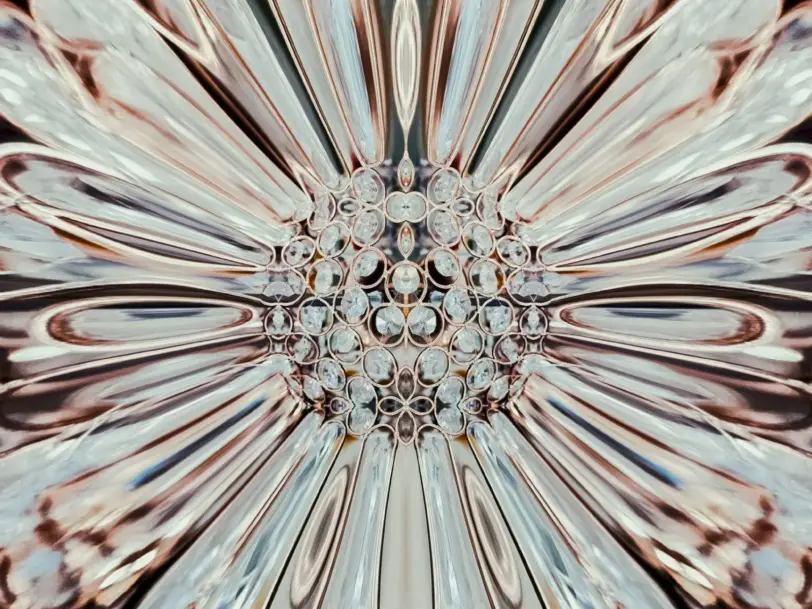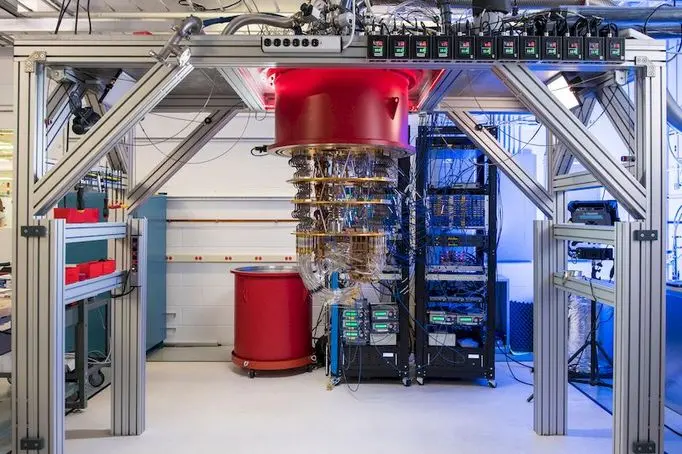What are time crystals?

Time crystals are a new type of phase of matter, first proposed in 2016. However, in a normal crystal the pattern remains constant, whereas in a time crystal the pattern continues to oscillate or resonate at certain times.
What are time crystals?
For example, if we had a bowl of ice with water and ammonia in it, it would be a regular glass because the arrangement of the molecules is fixed; but if we add heat or salt it becomes an unstable time crystal. Time crystals not only disrupt this standard arrangement, they also break another rule called “time symmetry”; This indicates that there cannot be an end point where something starts over again.
In other words, you can’t have the beginning and the end of something at the same time because it would be like starting all over again. Time crystals break this rule by having the beginning and ending at the same time. For this reason they are called “time” crystals and a fourth type of phase of matter beyond solid, liquid or gas.
How do time crystals work?
The oscillation of a time crystal occurs when it is in an energy deficit. This means that crystals absorb energy from the environment around them to fill the energy gap between where they are and where they need to be. This energy is then released back outside. The oscillation of time crystals is similar to the rotation of a pendulum, but it can never stop because a small amount of energy always flows through it. Therefore, the oscillation of a time crystal changes the environment around it. Time really “does” that way. The oscillation of time crystals occurs at a certain frequency. The frequency at which they oscillate determines the amount of energy they receive and the amount they emit. The specific frequency of a time crystal is how it forms a pattern that is stable enough to be called a crystal.
What are the properties of a time crystal?
The most notable features of these time crystals are:
- Stability: A time crystal will always have the same pattern regardless of environmental conditions. This means that if we put a time crystal in a different environment, it will still have a certain pattern.
- Universality: The same time crystal will have the same pattern in many different systems. This is because the crystal’s pattern is determined by its internal oscillation, not by surrounding conditions.
- Homogeneity: The pattern of time crystals is the same throughout the material. This means that every atom in the crystal has the same pattern as every other atom in the crystal. Homogeneity is a property of normal crystals, but not of time crystals.
Where did the time crystal come from?
Time crystals are a relatively new discovery in the field of physics, proposed by two groups of physicists in 2016. The first group, led by Frank Wilczek at MIT, came up with the idea of a time crystal while considering ways to create “broken symmetry” that would break the laws of physics as we know them. The second group, led by Phil W. Anderson of the University of Texas at Austin, proposed that a time crystal is an example of broken symmetry.
How to make a time crystal?
Time crystals are very unusual states of matter, but they are possible. There are several ways to create a time crystal, but the easiest approach is to take a regular crystal, such as a diamond, and add a small amount of perturbation to its atomic vibration, creating “internal feedback.” In this case, the crystal oscillates at a certain frequency and emits constant energy. The internal feedback creates a pattern so stable that it has been called a time crystal. There are other ways to make a time crystal, but they are less simple. A time crystal can be made by placing a regular crystal in a strong electromagnetic field. This field will cause the atoms in the crystal to vibrate and if the field is at the right frequency the atoms will oscillate creating a ‘broken symmetry’. In other words, its vibrations will create a flow of energy that cannot be described mathematically. This flow creates a pattern that is stable enough to be called a time crystal.
Google is making a time crystal

According to Google, the discovery of time crystals goes against one of Isaac Newton’s first principles of physics and could revolutionize quantum computing. This sounds like a science fiction series. It’s so surprising that even Google isn’t sure if its discovery is real.
A quantum computer created by Google and a group of researchers from Princeton, Stanford and other universities has managed to create a Time Crystal. They don’t even know if it’s real yet.
According to Newton’s First Law or Law of Inertia, Time Crystals cannot exist. This Law states that “an object at rest tends to rest, and an object in motion tends to remain in motion.” That is, objects maintain their state unless a force or energy is applied in another direction. We must remember that this is classical physics and everything changes in quantum physics.
Similar to what was described in the Quanta magazine article, it has been observed that Google Time Crystal can change state without being powerless. For a scientific explanation, see the Cornell University article or the Quanta Magazine website.
Google claims to have created a new type of glass that has been speculated about for years. Because the concept is so fresh and innovative, even the researchers themselves are not sure if the discovery is real. Qubits, which are quantum states that can be 1 or 0 at the same time, are used in quantum computers at the subatomic level.
Unfortunately, we cannot manipulate, read, or keep qubits stable. But if we used time crystals, the qubits would become ever-changing quantum states without consuming energy. This discovery has important implications for both computational science and fundamental physics. The researchers who supposedly created the Time Crystal are unsure of its reality and therefore share the information with the entire scientific community.